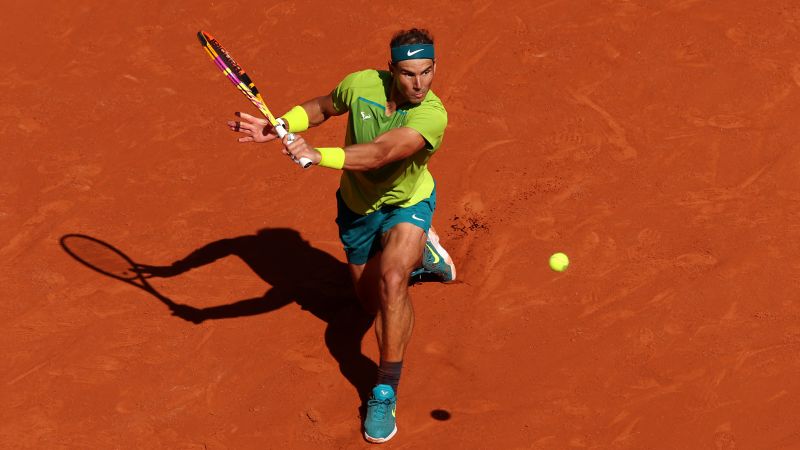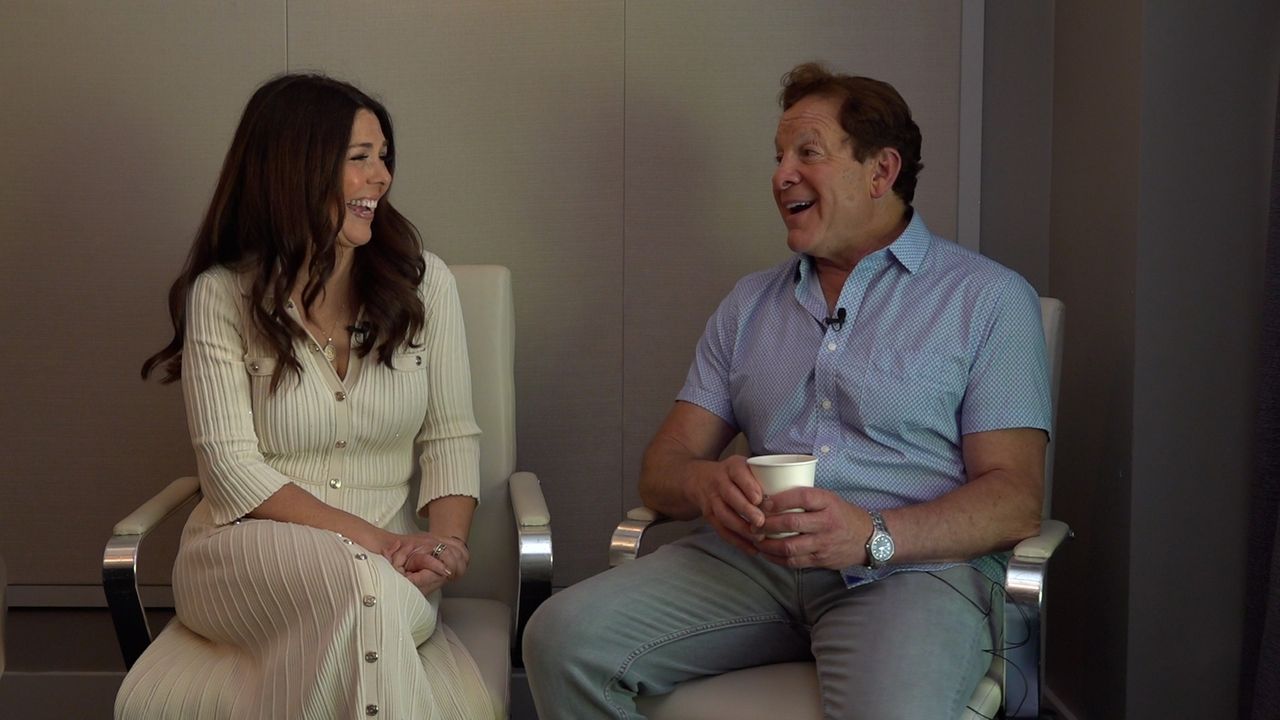The Science Behind Clay: Why Roland Garros Demands More

Welcome to your ultimate source for breaking news, trending updates, and in-depth stories from around the world. Whether it's politics, technology, entertainment, sports, or lifestyle, we bring you real-time updates that keep you informed and ahead of the curve.
Our team works tirelessly to ensure you never miss a moment. From the latest developments in global events to the most talked-about topics on social media, our news platform is designed to deliver accurate and timely information, all in one place.
Stay in the know and join thousands of readers who trust us for reliable, up-to-date content. Explore our expertly curated articles and dive deeper into the stories that matter to you. Visit Best Website now and be part of the conversation. Don't miss out on the headlines that shape our world!
Table of Contents
The Science Behind Clay: Why Roland Garros Demands More
Roland Garros, the prestigious French Open, stands apart from the other Grand Slams. Its iconic red clay courts demand a unique skill set, pushing players to their physical and mental limits. But what is it about this surface that sets it so far apart? The answer lies in the science behind clay itself, a complex interplay of minerals, particle size, and moisture content that directly impacts the game.
The Unique Properties of Clay Courts
Unlike the hard courts of the Australian Open or the grass of Wimbledon, clay courts offer a significantly slower playing surface. This is due to the inherent properties of the clay itself. The composition, typically a mixture of crushed brick and shale, creates a porous surface that absorbs impact and slows down the ball's speed. This slower pace results in longer rallies, demanding more strategic play and greater stamina from the athletes.
- Increased Ball Friction: The porous nature of the clay creates higher friction with the tennis ball, altering its trajectory and bounce. This leads to higher ball spins, particularly topspin, which is a crucial element in clay court mastery. Players like Rafael Nadal, renowned for his devastating topspin forehand, thrive on this characteristic.
- Unique Ball Bounce: The unpredictable bounce on clay requires players to possess exceptional court coverage and anticipation. The ball's trajectory can vary depending on where it lands on the court and the moisture content of the clay. This element of unpredictability contributes to the strategic depth of the game on clay.
- Higher Physical Demands: The slower pace and longer rallies translate into increased physical demands on players. They need to be prepared for extended periods of intense exertion, requiring exceptional endurance and agility. The frequent sliding movements also increase the risk of injuries, demanding meticulous preparation and conditioning.
The Science of Clay Court Construction and Maintenance
Creating and maintaining a high-quality clay court is a meticulous process. The precise composition of the clay, the size and distribution of its particles, and the level of compaction all contribute to the final playing surface. Too much compaction can lead to a hard, fast court, negating the advantages of the clay. Too little, and the court becomes unplayable.
Maintaining the optimal moisture content is crucial. Excessive moisture can lead to a slippery surface, while dryness makes the ball bounce erratically. The Roland Garros groundskeepers are masters of their craft, constantly monitoring and adjusting the court conditions to ensure a consistent and fair playing field.
Why Roland Garros Demands More: A Summary
The science behind clay explains why Roland Garros demands more from its players. It's not just a different surface; it's a completely different game. The unique properties of clay – its slow pace, unpredictable bounce, and the increased physical demands – require a specific skill set and immense stamina. This makes the French Open a truly unique and challenging Grand Slam tournament, a testament to the power of this seemingly simple material. It’s a fascinating blend of science, skill, and athleticism, making it a spectacle unlike any other on the tennis calendar.
Further Reading:
Call to Action: What are your thoughts on the unique challenges posed by clay courts? Share your opinions in the comments below!

Thank you for visiting our website, your trusted source for the latest updates and in-depth coverage on The Science Behind Clay: Why Roland Garros Demands More. We're committed to keeping you informed with timely and accurate information to meet your curiosity and needs.
If you have any questions, suggestions, or feedback, we'd love to hear from you. Your insights are valuable to us and help us improve to serve you better. Feel free to reach out through our contact page.
Don't forget to bookmark our website and check back regularly for the latest headlines and trending topics. See you next time, and thank you for being part of our growing community!
Featured Posts
-
 Supreme Court Ruling Heterosexual Plaintiff Prevails In Reverse Discrimination Dispute
Jun 06, 2025
Supreme Court Ruling Heterosexual Plaintiff Prevails In Reverse Discrimination Dispute
Jun 06, 2025 -
 Anderson Trial Verdict Announced Key Developments In Milwaukee Case
Jun 06, 2025
Anderson Trial Verdict Announced Key Developments In Milwaukee Case
Jun 06, 2025 -
 Police Investigation Three Dead Girls Found Father Missing In Washington
Jun 06, 2025
Police Investigation Three Dead Girls Found Father Missing In Washington
Jun 06, 2025 -
 Guttenberg Takes On Chilling Role New Lifetime Movie Details
Jun 06, 2025
Guttenberg Takes On Chilling Role New Lifetime Movie Details
Jun 06, 2025 -
 Ketema Casting Sparks Debate Will Ryan Gosling Play A White Black Panther In The Marvel Cinematic Universe
Jun 06, 2025
Ketema Casting Sparks Debate Will Ryan Gosling Play A White Black Panther In The Marvel Cinematic Universe
Jun 06, 2025
Latest Posts
-
 Dumb Idea Reform Party Leader Rejects Mps Burka Ban Call
Jun 06, 2025
Dumb Idea Reform Party Leader Rejects Mps Burka Ban Call
Jun 06, 2025 -
 Interview Steve Guttenberg Talks Kidnapped By A Killer
Jun 06, 2025
Interview Steve Guttenberg Talks Kidnapped By A Killer
Jun 06, 2025 -
 Official Announcement Dallas Stars Announce Coaching Staff Update
Jun 06, 2025
Official Announcement Dallas Stars Announce Coaching Staff Update
Jun 06, 2025 -
 Cnn Business Exclusive Ai Ceo On New Unsettling Ai Developments
Jun 06, 2025
Cnn Business Exclusive Ai Ceo On New Unsettling Ai Developments
Jun 06, 2025 -
 Microbiomes First Inhabitants A Key To Reducing Hospital Admissions
Jun 06, 2025
Microbiomes First Inhabitants A Key To Reducing Hospital Admissions
Jun 06, 2025
